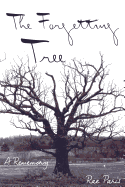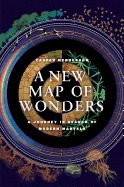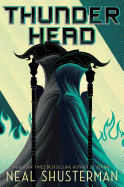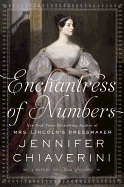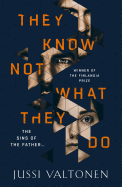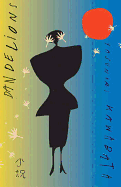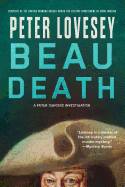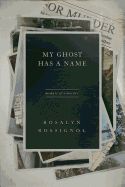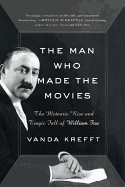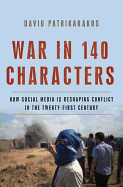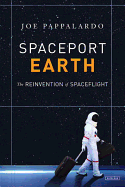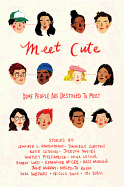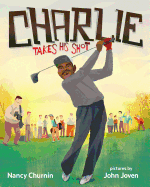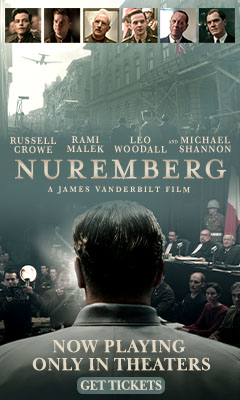Friday, January 12, 2018
MLK Day is upon us once again, an annual celebration of Dr. King's contributions to the Civil Rights Movement. But despite the historical victories of the movement, there is much work to be done to achieve true racial equity in the United States. So in honor of the holiday, we offer the following reflections on race and race relations from (mostly) contemporary black authors.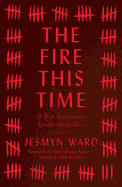 The Fire This Time, edited by Jesmyn Ward, collects essays and poems on the question of race in the U.S. in one hefty and important tome. Pieces from Edwidge Danticat, Kima Jones, Claudia Rankine, Wendy S. Walters and others speak to the need to talk about the issue of race. The book takes its title from the classic work by James Baldwin, The Fire Next Time, which consists of two essays: "My Dungeon Shook: Letter to My Nephew on the One Hundredth Anniversary of Emancipation" and "Down at the Cross: Letter from a Region of My Mind." Both draw on Baldwin's own experience of race, the latter addressing the intersection of race and religion while the former explores the role of race in American history in the form of a letter to Baldwin's nephew.
The Fire This Time, edited by Jesmyn Ward, collects essays and poems on the question of race in the U.S. in one hefty and important tome. Pieces from Edwidge Danticat, Kima Jones, Claudia Rankine, Wendy S. Walters and others speak to the need to talk about the issue of race. The book takes its title from the classic work by James Baldwin, The Fire Next Time, which consists of two essays: "My Dungeon Shook: Letter to My Nephew on the One Hundredth Anniversary of Emancipation" and "Down at the Cross: Letter from a Region of My Mind." Both draw on Baldwin's own experience of race, the latter addressing the intersection of race and religion while the former explores the role of race in American history in the form of a letter to Baldwin's nephew.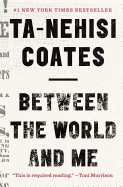 Ta-Nehisi Coates's Between the World and Me is similarly structured as a letter to a young black boy, in this instance, Coates's son. Coates writes about his own experience living in a black body, trying to encourage his son to understand his history while still striving for something different for the future. And in Invisible Man, Got the Whole World Watching, Mychal Denzel Smith offers the perspective of a young black man coming of age in the time of Trayvon Martin. --Kerry McHugh, blogger at Entomology of a Bookworm
Ta-Nehisi Coates's Between the World and Me is similarly structured as a letter to a young black boy, in this instance, Coates's son. Coates writes about his own experience living in a black body, trying to encourage his son to understand his history while still striving for something different for the future. And in Invisible Man, Got the Whole World Watching, Mychal Denzel Smith offers the perspective of a young black man coming of age in the time of Trayvon Martin. --Kerry McHugh, blogger at Entomology of a Bookworm
Enchantress of Numbers: A Novel of Ada Lovelace
by Jennifer Chiaverini
In Enchantress of Numbers: A Novel of Ada Lovelace, Jennifer Chiaverini (Fates & Traitors) illuminates the life of the woman considered to be the world's first computer programmer. As the only legitimate child of Lord Byron, the brilliant poet and infamous rascal, Ada is in the spotlight from birth. Her parents, mismatched in temperament, are estranged early in her life and she is raised to be rational and disciplined--everything her mercurial father is not.
Ada narrates this novel, looking back on her idiosyncratic life. She is a willful child and an early mathematics prodigy with no playmates or diversion because her mother hopes that "those Byronic branches and shoots can be pruned back." As a young adult, she gravitates to intellectual circles and meets inventor Charles Babbage, with his prototype of a number calculating machine. Ada quickly understands the magnitude of this invention more than he, saying it is capable of "vastly more than he could yet imagine."
As an adult, Ada comes to some understanding of the genius father she never knew. She vows "to become as great a mathematician as my father had been a poet." Yet skeptics and societal expectations constantly threaten to impede her work. Her efforts with the calculating machine are questioned even by its inventor. Ada's failing health, along with the patronizing view of women, resulted in her contributions to the study of mathematics being buried for centuries. Chiaverini once again shows her considerable skill breathing life into historical figures that are too little known. --Cindy Pauldine, bookseller, the river's end bookstore, Oswego, N.Y.
Discover: Enchantress of Numbers: A Novel of Ada Lovelace tells the heartbreaking story of the early 19th-century countess whose remarkable advances in mathematics were very nearly forgotten.
They Know Not What They Do
by Jussi Valtonen, transl. by Kristian London
Finnish author Jussi Valtonen's They Know Not What They Do is a pulsing psychological thriller. In a near future, technological innovation gains speed and unscrupulous companies increase profits by targeting impressionable children.
A U.S. company markets medication through schools to help kids with their social skills. It also promotes a new device that maps a person's neural pathways, tailoring advertisements and entertainment to users without the use of a screen. Images simply appear in front them, allowing a teen to watch a movie while attending class. With his English-language debut, translated by Kristian London, Valtonen is clearly questioning whether faster and more convenient technology is always a good thing.
Joe Chayefski is an accomplished neurosurgeon who conducts vital research on laboratory animals. He lives in Baltimore with his second wife and two daughters. Many years earlier, Joe abandoned his first wife and son Samuel in Finland to pursue his career in the U.S. As vandals target Joe's laboratory and home, he begins to fear the worst--that Samuel, a well-known animal rights activist, has come to Baltimore to take revenge on his absentee father.
A perfect novel for our time, They Know Not What They Do is a satirical critique of our contemporary infatuation with innovation, fueled by corporate greed and a desire to do everything faster. With a sympathetic hand, Valtonen skillfully creates a perfect storm of ethical conundrums: animal rights, life-saving research, parental obligations, moral corruption and soul-destroying greed all tied into a cautionary tale about a man struggling with the consequences of his decisions. --Shahina Piyarali, writer and reviewer
Discover: Jussi Valtonen delivers a heart-pounding thriller about a neurosurgeon in Baltimore, his abandoned Finnish family and the unnerving speed of technological innovation.
Dandelions
by Yasunari Kawabata, transl. by Michael Emmerich
Yasunari Kawabata (Beauty and Sadness) was the first Japanese writer to win the Nobel Prize for Literature. Dandelions was left unfinished when he committed suicide in 1972.
In the small town of Ikuta in early spring, the yellow flowers are proliferating along the riverbank and creating a wild luminosity of color. This metaphor crops up in the story of two young lovers. Kuno's lover, Ineko, is committed to a mental hospital after suffering from "body blindness," a condition in which she loses sight of physical objects in her periphery, including her lover's body during sex. Much of the novel revolves around the relationship between Kuno and Ineko's widowed mother, simply referred to as "Mother." The two spend a night together in a rundown inn after leaving Ineko in the hospital. Ineko's painful story is revealed through their dialogue and flashbacks: her father was a military officer in World War II who wanted to kill himself after Japan's humiliating defeat. He was saved by a mysterious girl--likened to a sprite--and later fell to his death while horseback riding along the ocean. Ineko witnessed his death and internalized the trauma. The night in the inn, Mother and Kuno argue about who or what is ultimately responsible for the past.
The novel ends prematurely, yet thematically, and still feels like a whole, worthwhile experience. Michael Emmerich's translation renders the novelist's prose style as poetic. It's hard to know if Dandelions is better or worse off for its incompletion. As it stands, the novel is a deeply absorbing meditation on love, madness and the sinuous designs of fate. --Scott Neuffer, writer, poet, editor of trampset
Discover: Nobel Laureate Yasunari Kawabata's unfinished novel ruminates on the beauty and sadness of human love.
Mystery & Thriller
Beau Death
by Peter Lovesey
Peter Lovesey (Another One Goes Tonight) has created an intricate and multi-layered puzzle for Superintendent Peter Diamond and his team to solve in Beau Death. The story begins with a building demolition: an old row of houses in Bath, England, is being destroyed when a skeleton is revealed in an attic. The police must use cherry pickers to investigate the now precariously positioned body, because no one can enter the half-demolished house.
What they see strikes an interesting historical note--the skeleton is wearing 18th-century regalia, including a black wig and a white tricorne hat--both distinctive traits of Beau Nash, known as the King of Bath in the 1700s. Can it be that the famous arbiter of fashion has been entombed in an attic for hundreds of years? Or is the killing much more modern than that?
Lovesey keeps readers on their toes as Diamond's team scrambles to scrutinize the skeleton and, then, when someone new is shot and killed, the team must work overtime, probing both the past and the present. Twists and riddles abound, as the investigators inquire into Beau Nash's life, as well as the wealthy members of the exclusive modern society that bears his name. Diamond's dry wit and perspicacity adds welcome levity to the story, as do the personal quirks of several other team members. Fans of Ian Rankin, Peter Robinson or Deborah Crombie are sure to love Beau Death. --Jessica Howard, bookseller at Bookmans, Tucson, Ariz.
Discover: A complicated mystery that may involve the final resting place of Beau Nash, a famous 18th-century dandy.
Biography & Memoir
My Ghost Has a Name: Memoir of a Murder
by Rosalyn Rossignol
On October 20, 1999, Nell Crowley Davis, 38, was brutally murdered in her backyard, her body hidden in the family's compost bin. Three teens were charged with the crime and ultimately convicted: John Ridgway, Kevin Bergin and Sarah Nickel, Davis's daughter--who insists she is not guilty of her mother's murder. In My Ghost Has a Name, Rosalyn Rossignol sets out to uncover what exactly happened on that fateful day--and why.
The story follows much of the traditional true crime form: Rossignol retraces the police investigation and court cases in great detail while reaching out to key players--including the suspects--for their points of view and perspectives. As she recounts this research for readers, she is quick to point out where her investigation leads to insights that are new or different from those of the police originally involved, especially as those differences may provide some final insight into Sarah's guilt or innocence.
What makes the book different from others in the genre, however, is Rossignol's connection to the victim, with whom she grew up and maintained a close friendship through her young adult years. This connection gives My Ghost Has a Name added depth. As she grasps for a simple answer to a complex question, Rossignol becomes more and more intertwined in her own story, progressing "from one idiosyncratic 'version' of the truth to another." Following along as Rossignol unravels those versions is both horrifying and somehow comforting, as she searches for threads of humanity in an inhuman crime. --Kerry McHugh, blogger at Entomology of a Bookworm
Discover: Rosalyn Rossignol investigates the murder of her childhood best friend in an attempt to understand what happened to her--and why.
The Man Who Made the Movies: The Meteoric Rise and Tragic Fall of William Fox
by Vanda Krefft
Vanda Krefft's fascinating and massive biography of silent film pioneer William Fox, The Man Who Made the Movies, resurrects the memory of the long-forgotten film mogul who started Fox Film Corporation. Krefft also rehabilitates his battered reputation. While most film buffs remember scrappy pioneer movie studio heads like Harry Cohn at Columbia, Carl Laemmle at Universal and Louis B. Mayer at MGM, among others, Fox has been largely forgotten because he lost his movie empire in 1930 (five years before it became 20th Century Fox).
A Jewish Hungarian emigrant, Fox entered the film business in 1904 when he purchased and built numerous theaters, and bought films from other studios to play in them. By 1914, he leveraged his investments to form Fox Film Corp. and started making his own films. Fox's top stars were screen vamp Theda Bara, cowboy star Tom Mix and leading man William Farnum. In 1927, Fox spent $1.2 million producing F.W. Munau's Sunrise. While the film never made back its cost, it won three Oscars at the first Academy Awards ceremony, including Best Picture. Fox's world began to fall apart when he tried to finance a merger with MGM; he was sued for violating antitrust laws, went bankrupt during the stock market crash, lost control of his studio during a hostile takeover and ended up in prison.
At more than 900 pages, this is an enormous, well-researched, entertaining and valuable contribution to preserving and correcting film history. --Kevin Howell, independent reviewer and marketing consultant
Discover: Vanda Krefft's massive and entertaining biography repairs the reputation of pioneer movie studio founder William Fox who lost his studio in 1930 and ended up in prison.
Social Science
War in 140 Characters: How Social Media Is Reshaping Conflict in the Twenty-First Century
by David Patrikarakos
War in 140 Characters by journalist David Patrikarakos posits the emergence of a type of human whose global connection via the Internet has opened new fronts in conflict zones, further blurring the line between civilian and combatant. From the Gaza Strip to Eastern Ukraine and Syria, the courses of modern conflicts are being molded by the Internet as much as bombs and guns. The new soldiers are armed with only a smart phone and a social media account. From shaping public opinion to recruiting fighters or organizing supplies, these Twitter combatants are challenging the traditional powers of the wartime nation state and forcing changes to centuries-old military conventions.
Patrikarakos's first case study is the 2014 Gaza war, during which a Palestinian teenager tweeted her harrowing experiences under Israeli bombing. Her accounts won worldwide sympathy, and posed an unprecedented public relations challenge to the Israeli Defense Force. Patrikarakos then turns to a Ukrainian woman who uses Facebook to help supply soldiers fighting separatists in Eastern Ukraine. He also interviews a former professional troll in Russia, who was paid to spread Kremlin propaganda online, and explores how an amateur sleuth helped prove that a Russian missile shot down Malaysia Airlines Flight 17. Finally, Patrikarakos chronicles the recruitment and propaganda efforts of the Islamic State and those trying to stop them.
War in 140 Characters is an illuminating look at the intersection between the oldest of mankind's undertakings and our latest technology. The digitally decentralized future holds as many promises as it does dangers. These early examples of that future are both empowering and ominous, and make for fascinating reading. --Tobias Mutter, freelance reviewer
Discover: A journalist gives first-hand accounts of a new theater of war: social media.
Science
A New Map of Wonders: A Journey in Search of Modern Marvels
by Caspar Henderson
A New Map of Wonders: A Journey in Search of Modern Marvels is a wide-ranging, almost impossibly learned investigation into wonder, "both the things we wonder at and the nature of wonder itself." As a follow-up to The Book of Barely Imagined Beings, Caspar Henderson has set himself an ambitious task with broad parameters, one that incorporates science, philosophy, art criticism and more to examine one of the most fundamental human experiences. A New Map of Wonders is a reminder of the many ways advances in technology and knowledge have enriched and added to the bizarre suite of marvels this world has to offer us.
To give the book some sense of structure, Henderson has grouped his wonders into seven categories--mimicking the Seven Wonders of the World--including familiar wonders like light and the brain, among other idiosyncratic choices. With countless footnotes, illustrations and photographs, readers will be hard-pressed not to come away with their minds expanded by some of the facts and theories on display. More importantly, Henderson is a fun, clever guide to the inner workings of hearts and galaxies, seemingly able to conjure the right metaphor or literary reference to describe any number of complex phenomena. Writing about the eventual, apocalyptic fate of our planet, Henderson muses that "maybe there is some truth in the old Norse idea that the future is determined in fibres that have already been selected and are being woven." A New Map of Wonders is an exciting reminder that awe and curiosity are not limited to the ancients. --Hank Stephenson, bookseller, Flyleaf Books, Chapel Hill, N.C.
Discover: A wide-ranging exploration of various phenomena that continue to inspire wonder in an age of increasing scientific understanding.
Spaceport Earth: The Reinvention of Spaceflight
by Joe Pappalardo
When the last space shuttle launched in 2011, it marked what many believed was the end of human flights into space. However, Popular Mechanics contributing editor Joe Pappalardo suggests in Spaceport Earth the end is nowhere in sight.
Although the U.S. government has backed out, the door has been opened for many private companies to step up and invent new techniques, equipment and strategies to send rockets to the International Space Station, as well as on flights that will eventually land them on Mars and beyond. Spaceports have sprouted up around the globe as billionaires have poured money into development. They hope to be the leaders in an industry where a single rocket's launch can make or break a company; abrupt disintegration prior to takeoff can set them back years and millions of dollars.
Pappalardo gives readers firsthand accounts of a variety of these blast-offs and new companies as he visits launch pads around the country. He witnesses explosions that wound and kill, as well as the jubilation when it all goes according to plan. He also discusses the similarities between space rockets and intercontinental ballistic missile (ICBMs), and the U.S.'s disintegrating nuclear infrastructure as he checks out silos across the country. His explanations are highly informative yet not overly technical, and the overall tone is one of hope as humans strive to create an economical and reusable system to propel humans and advanced technology into the universe. --Lee E. Cart, freelance writer and book reviewer
Discover: Popular Mechanics editor Joe Pappalardo gives a detailed account of the new leaders in the space industry.
Poetry
The Forgetting Tree: A Rememory
by Rae Paris
Flavored with both vulnerable hesitation and uncompromising resolution, poet and essayist Rae Paris's debut, The Forgetting Tree, is the memoir of a young black woman's search to understand her personal and racial past. In a journey of backwards migration, Paris leaves her past in the Los Angeles streets south of Compton on a road trip into her family's roots in New Orleans. From there she crisscrosses the South to uncover the raw truth of slavery, segregation and racism at former plantations, cemeteries, Klan meeting houses, civil rights battlegrounds, lynching trees and graves of both famous and unnamed black ancestors. With photos of sites, poems, letters, meditations and eulogies, The Forgetting Tree is a lyrical collage of the suffering and resilience of her ancestors. As Paris describes it, her writing is "about imagining a different future for our Black lives, our Black bodies, in a world whose daily operation depends on its shameless refusal to own its past and present role in our current and future terror."
During the course of the years covered in what she subtitles A Rememory, her father dies and she attends workshops and events like the Zora! Festival honoring Zora Neale Hurston. She also listens to white docents give plantation tours with faceless slave mannequin props, visits Harriet Tubman's grave and stops at monuments to Brer Rabbit and Uncle Remus. Her title comes from the place where slaves were branded and then forced to walk around a tree to forget their homes. Paris writes in an open letter to the people of Black Lives Matter: "Hold on, we say, to you, to us, because holding on to each other is everything, often the only thing." The Forgetting Tree is her fierce ode to holding on. --Bruce Jacobs, founding partner, Watermark Books & Cafe, Wichita, Kan.
Discover: In an intimate collage of journals, verse, photographs and letters, poet and essayist Rae Paris reflects on her personal and racial past.
Children's & Young Adult
Thunderhead
by Neal Shusterman
Readers are thrown back into the postmortal world of Neal Shusterman's Scythe in this high-speed sequel.
Citra Terranova has finished her scythe training and is now a junior scythe known as Scythe Anastasia. Rowan Damisch, who had been pitted against Citra for the scythe position, is on the run. Calling himself Scythe Lucifer, he has illegally taken on the duties of a scythe and gleans scythes who abuse their power and status. While the scythedom "had, for... many years, administered the quietus of death with a noble, moral, and humane hand," there is a new branch of the scythedom full of a "frightening pride... that finds pleasure in the act of taking life." It is the scythes who align with this "new order" that Scythe Lucifer gleans. The new order, however, is growing in power and popularity. They see Scythe Anastasia as something of a thorn in their side; Scythe Lucifer, however, is clearly someone who must be stopped.
Scythe Anastasia also has an uneasy relationship with Scythe Lucifer. Having trained side by side, Citra and Rowan share an extremely strong bond. The last time they were together, "they both said the words they had sworn they'd never allow themselves to say. In... that desperate but triumphant moment, he told her that he loved her, and she admitted to him that, yes, she loved him, too." Citra wants Rowan to be safe; Scythe Anastasia has a problem with Scythe Lucifer's methods.
Navigating this political and moral landscape is difficult but as the scythedom becomes more fractious, Citra and Rowan find themselves facing ever greater danger. Readers will fly through this 500-plus-page novel, barely aware of the time passing as the stakes rise rapidly, and the plot races at a breathless pace to a massive cliffhanger. --Siân Gaetano, children's and YA editor, Shelf Awareness
Discover: Citra and Rowan find themselves at the center of a growing divide among scythes in this intense second book in Neal Shusterman's Arc of a Scythe series.
Meet Cute
by Jennifer L. Armentrout
The world is filled with unexpected connections of the heart, and in Meet Cute, 14 YA authors shine their light on how extraordinary and unexpected those moments can be. This anthology, encompassing contemporary realism, fantasy and science fiction tales, features a diverse set of characters, situations and storytellers.
In "The Dictionary of You and Me," Jennifer L. Armentrout introduces the spark of romance over the phone between a library employee and a patron who is in possession of a long-overdue book. Kass Morgan takes readers into the near future in "259 Million Miles," in which two teenage applicants for a mission to Mars are locked in an isolation chamber for 24 hours. In "Hourglass" by Ibi Zoboi, a best friend's romantic betrayal provides the impetus for a young woman's newfound self-assurance and a surprising meeting with her hometown's new resident, a handsome young Senegalese dressmaker.
Though many of these stories take place in sprawling metropolises--New York City is featured in several pieces--the stories range in both genre and style, including themes of love and loss, racial prejudices, sweet first looks, unexpected attraction and missed connections, and each author has created a distinctive character pairing and chance romantic meeting. Some feature a love that spans a lifetime, while others share rushed relationships lasting barely an hour, but all focus on the lasting effect that a brief, intimate connection can have, no matter the final outcome. As the two protagonists of Nicola Yoon's "The Department of Dead Love" so astutely surmise, " 'All love ends,' she says. 'Maybe,' I say. 'But it has to start somewhere.' " --Jennifer Oleinik, freelance writer and editor
Discover: A diverse cast of couples meet for the first time in this anthology of romantic short stories from 14 beloved YA authors.
Charlie Takes His Shot: How Charlie Sifford Broke the Color Barrier in Golf
by Nancy Churnin, illus. by John Joven
African American legends like Serena Williams and Michael Jordan are household names, but not long ago, professional sports were strictly segregated. Jackie Robinson broke Major League Baseball's color barrier in 1947; the National Basketball Association allowed Earl Lloyd to play in 1950; Brown v. Board of Education integrated U.S. public schools in 1954. Golf, however, took longer to reach racial par for the course.
Charles Luther Sifford "knew he was born to play" golf. But most greens were whites-only, so Sifford initially worked as a caddie. When he played, however, he won: Sifford was the "United Golf Association's National Negro Open [champion] so many times--from 1952 to 1956 and again in 1960--they told him to keep the trophy." Emboldened by his friend and advocate Jackie Robinson, Sifford worked tenaciously to become the first African American to break into the Professional Golfers' Association (PGA). He joined in 1961, and won his first PGA tournament in 1967. "Charlie... opened a door for others"; decades later, even Tiger Woods "credit[s] Sifford for making his career possible."
Author Nancy Churnin, theater critic for the Dallas Morning News when she's not writing children's books, introduces the youngest readers to a sports pioneer who undoubtedly deserves greater attention. Her youth-tempting narrative highlights the excitement of Charlie's feats--how he played under "the blue sky at dusk" on greens from which he was barred--while teaching the history of what Charlie endured and nevertheless achieved. Artist John Joven's energetic illustrations underscore Charlie's determination and dedication, always in motion toward meeting his goals. An author's note and timeline provide further illuminating details about Charlie's remarkable life. Inspiring and informative, Churnin and Joven ensure Charlie wins. --Terry Hong, Smithsonian BookDragon
Discover: As a boy, African American golfer Charles Luther Sifford "could strike the ball farther and truer than anyone," but it wasn't until he was 39 that he was allowed to play--and later win--in the PGA.
| Advertisement nuremberg--now playing in theaters |


